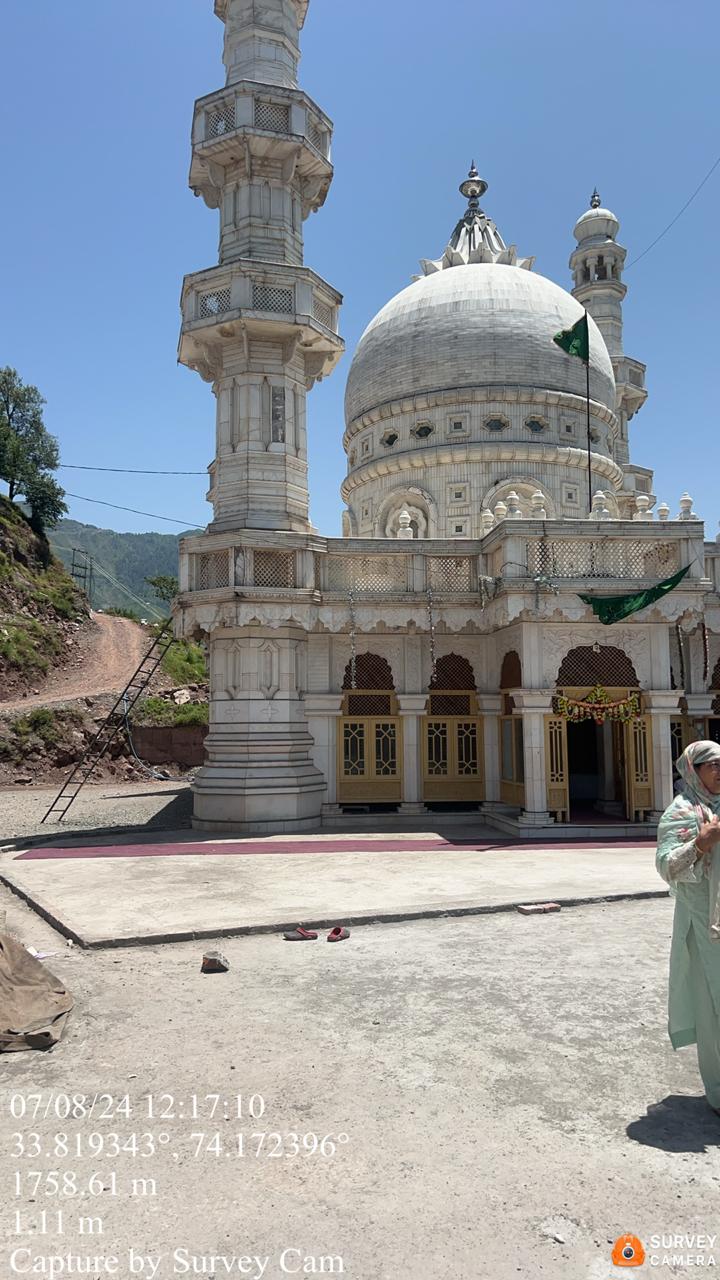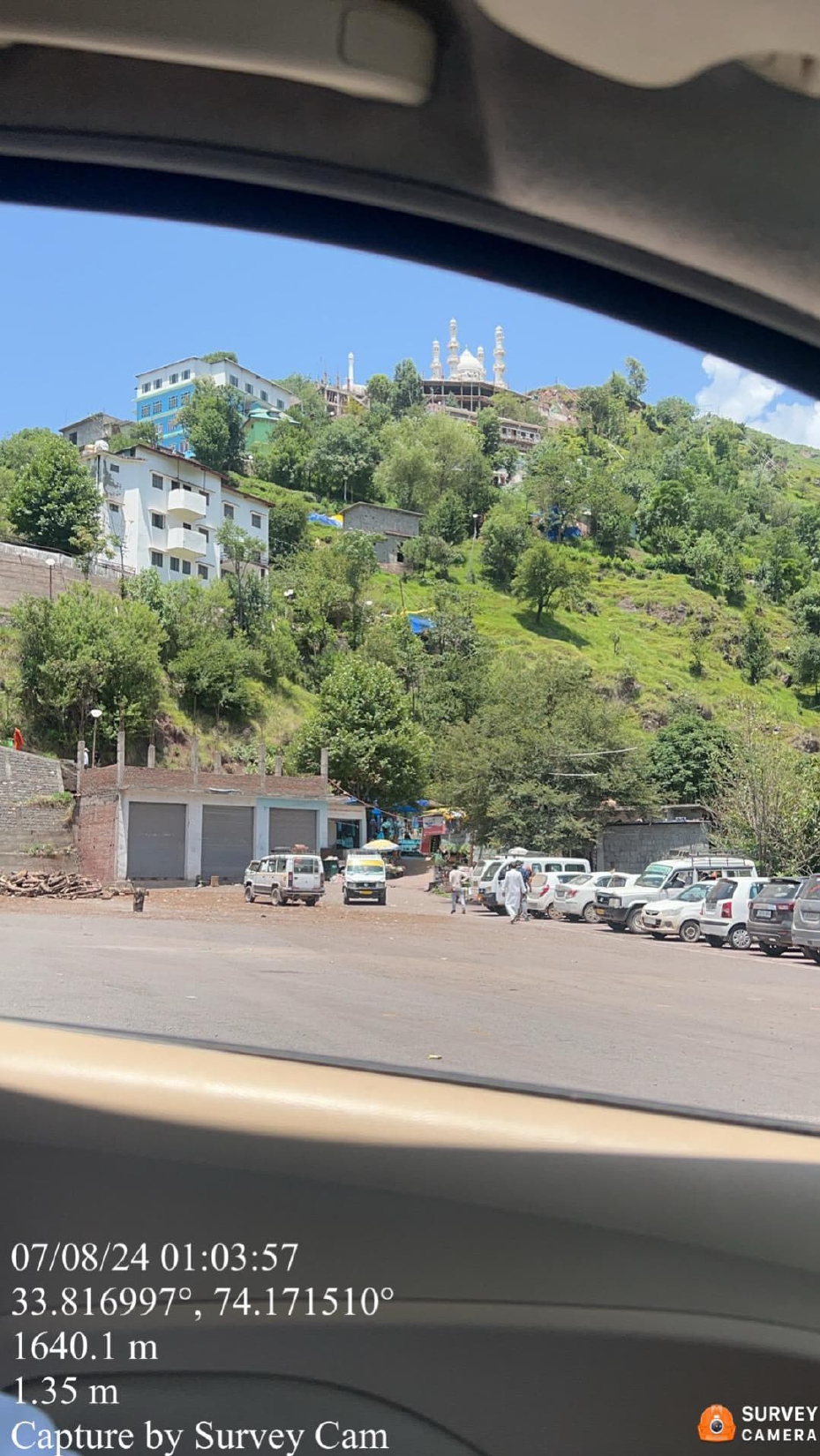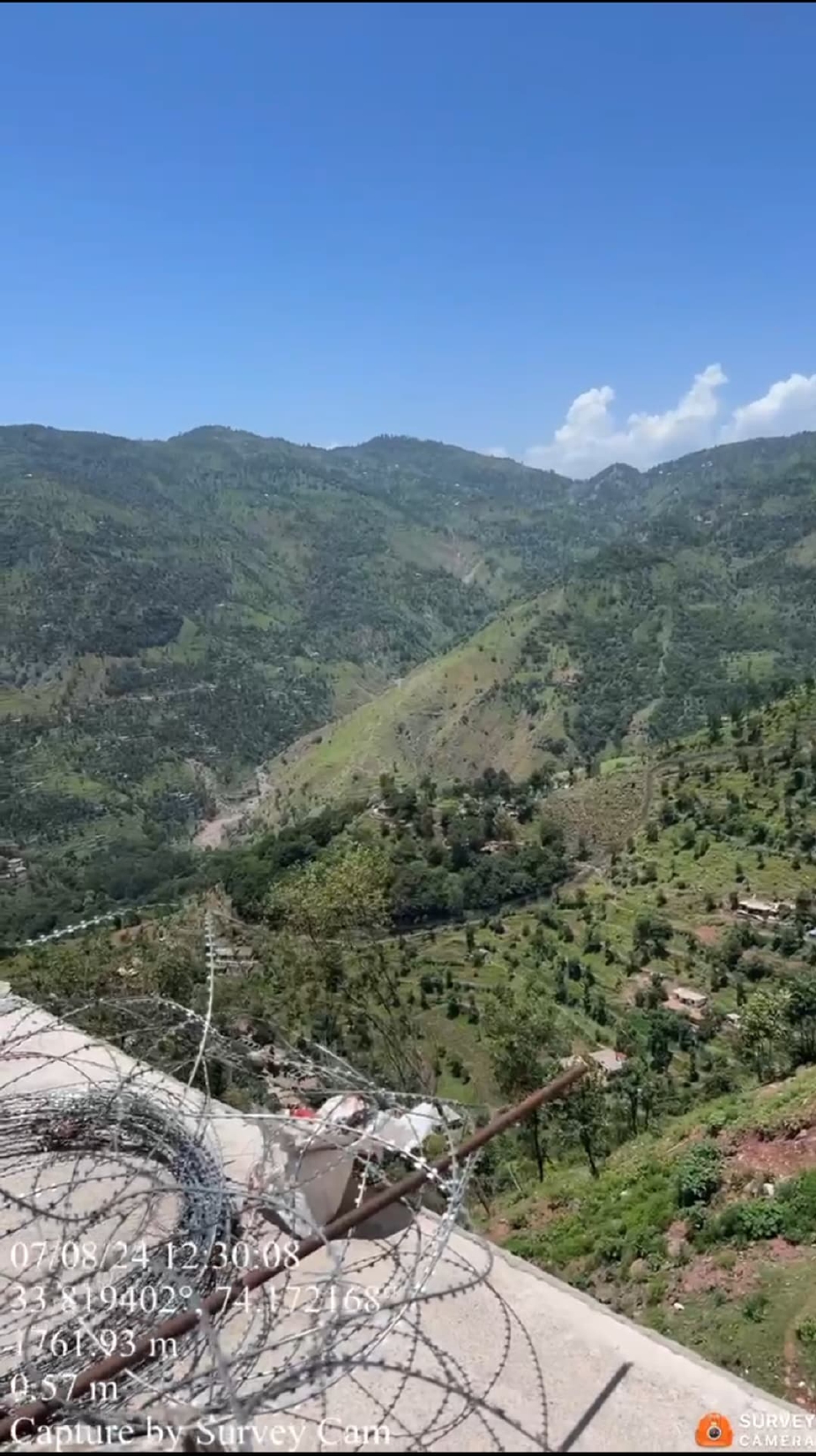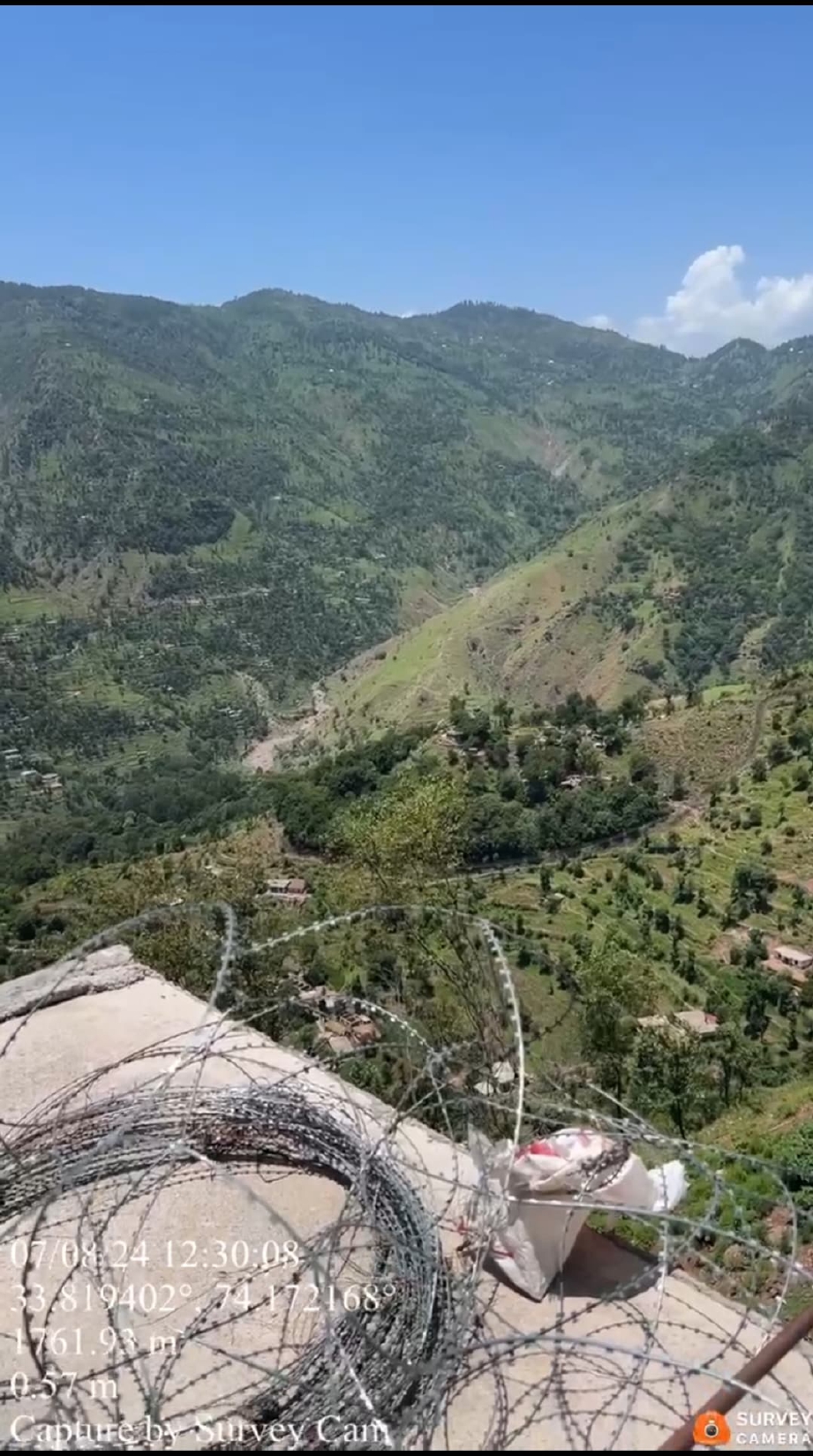Description
Introduction
Guntrian is a small village located in the Mandhar area of Poonch district in Jammu and Kashmir, India. The history of Guntrian, like many villages in this region, is shaped by its strategic location near the Line of Control (LoC) between India and Pakistan.
Historical Background:
Ancient Times:
Poonch has a rich history, with references dating back to ancient texts. The region was once part of the larger Kashmir principality and has seen influences from various dynasties, including the Mauryas, Kushans, and Mughals.
Medieval Period:
During the medieval period, Poonch became a princely state under the control of various local rulers. The area was known for its strategic importance and rich culture.
Partition of 1947:
The partition of India in 1947 and the subsequent creation of Pakistan significantly impacted the region. Poonch was a site of conflict during the first Indo-Pak war (1947-48), and the ceasefire line (now LoC) was established, dividing the region.
Post-Partition Era:
Guntrian village, like many others in the region, found itself close to the LoC. The village has faced challenges due to its proximity to the border, including periods of cross-border firing and tension. The inhabitants have often been caught in the conflict between the two nations.
Cultural and Social Aspects
Guntrian, like other villages in Poonch, has a diverse population with a mix of cultural influences from both the Hindu and Muslim communities. The people of Guntrian are known for their resilience and strong sense of community, despite the challenges posed by the border situation.
The village, with its scenic beauty and close-knit community, reflects the broader history and cultural richness of the Poonch region.
For small villages like Guntrian, exact population figures can be hard to come by without specific census data. However, based on general estimates and the size of similar villages in the Poonch district, Guntrian likely has a population ranging from a few hundred to around 1,000 people.
Cultural Heritage
Religious Diversity
Guntrian, like other parts of Poonch, is home to a mix of communities, predominantly Hindus and Muslims. This religious diversity contributes to a rich cultural exchange and the coexistence of different traditions and practices.
Religious festivals such as Eid, Diwali, and other local festivals are celebrated with enthusiasm, often involving the entire community.
Folk Music and Dance
The people of Guntrian and the Poonch region have a rich tradition of folk music and dance. Instruments like the ‘Rabab’ and ‘Tumbaknari’ are commonly used in folk music. Traditional dance forms, such as ‘Gatka’ (a traditional martial art), are also practiced, reflecting the martial history of the region.
Attire
Traditional clothing in Guntrian is similar to that of the broader Poonch region. Men often wear the ‘Pheran,’ a long robe, especially in winter, while women may wear traditional outfits adorned with intricate embroidery, reflecting Kashmiri influences.
Cuisine
The cuisine of Guntrian is a blend of local Pahari and Kashmiri influences. Rajma (kidney beans), rice, maize bread (Makki di roti), and dishes like ‘Gushtaba’ (a type of meatball curry) and ‘Rogan Josh’ are popular. The use of local spices and herbs gives the food its distinct flavor.
Kahwa, a traditional green tea with saffron and almonds, is a common beverage, especially in winter.
Heritage
Architectural Heritage
The architecture in Guntrian and surrounding areas typically features traditional stone and wood houses designed to withstand the cold climate and occasional seismic activity. These houses often have sloping roofs to handle snow.
Some older buildings and structures might reflect the architectural styles influenced by the Dogra rulers and other historical dynasties that governed the region.
Craftsmanship
The region is known for its woodwork, embroidery, and carpet weaving. Artisans in the area often create intricate patterns on woolen shawls, carpets, and other textiles, showcasing the skilled craftsmanship passed down through generations.
Historical Significance
Poonch, including villages like Guntrian, has a significant historical heritage due to its strategic location. The region has seen numerous battles and political shifts, particularly during the times of the Mughal Empire, the Dogra rule, and the post-independence conflicts between India and Pakistan.
Social and Communal Life
Community Ties
The village life in Guntrian is characterized by strong community bonds. People often rely on each other for support, especially during challenging times due to the region’s proximity to the Line of Control (LoC).
Traditional ‘panchayats’ (village councils) play a significant role in resolving disputes and making communal decisions.
Simplicity and Self-Sufficiency
The lifestyle in Guntrian is simple and revolves around traditional ways of living. Most villagers engage in agriculture, animal husbandry, and small-scale trading as their primary occupations. Daily routines often begin early in the morning, with people tending to their fields, livestock, or other household chores.
Agriculture
The majority of the villagers are involved in farming, growing crops like maize, wheat, and vegetables. The agricultural practices are largely traditional, with families working together to till the land, plant crops, and harvest produce. The region's terrain and climate determine the types of crops grown.
Community and Social Bonds
Close-Knit Community
The villagers of Guntrian share strong social bonds. Life in the village is communal, with people relying on one another for support in times of need. This sense of community is reflected in the way villagers come together to celebrate festivals, weddings, and other social events.
Traditional Values
Respect for elders, hospitality, and adherence to traditional customs are important aspects of life in Guntrian. The villagers uphold these values, passing them on to younger generations.
Cultural Practices and Traditions
Festivals and Celebrations
Religious and cultural festivals play a significant role in village life. Events like Eid, Diwali, and local fairs (melas) are celebrated with enthusiasm, bringing together the entire community for feasts, prayers, and traditional music and dance.
Handicrafts and Art
Many villagers, especially women, engage in traditional crafts such as embroidery, weaving, and knitting during their leisure time. These activities not only preserve cultural heritage but also contribute to the household economy.
Connection to Nature:
Natural Environment: Guntrian is surrounded by scenic landscapes, including mountains, forests, and rivers. The villagers have a deep connection to nature, relying on it for their livelihoods and maintaining a sense of respect and stewardship for the environment.
Seasonal Rhythms: Life in the village follows the rhythms of the seasons. The harsh winters often bring snow, which limits outdoor activities and requires villagers to store food and fuel in advance. Summers and spring are more active seasons, with farming, festivals, and social gatherings taking place.
Challenges and Resilience:
Border Proximity: Due to its proximity to the Line of Control (LoC), the village occasionally faces challenges such as cross-border firing, which can disrupt daily life and pose safety concerns. Despite these challenges, the villagers remain resilient, adapting to the circumstances with a strong sense of unity and determination.
Limited Access to Modern Amenities: While modern facilities such as electricity and mobile communication have reached the village, access to healthcare, education, and infrastructure may still be limited compared to urban areas. Villagers often rely on traditional knowledge and community support to meet their needs.
Education and Modern Influence:
Education: The importance of education is increasingly recognized in Guntrian, with many children attending local schools. However, higher education opportunities may require traveling to nearby towns or cities. The younger generation is gradually embracing modern education while balancing it with their cultural roots.
Migration for Employment: Some villagers, particularly the youth, migrate to nearby towns or cities for better employment opportunities. This migration has brought new influences and ideas back to the village, gradually transforming certain aspects of the lifestyle.
Religious and Spiritual Life:
Religious Practices: Religion plays a central role in the daily lives of the villagers. Prayers, rituals, and religious gatherings are common, with local mosques and temples serving as important centers for spiritual and social life.
Traditional Wisdom: Many villagers still rely on traditional medicine and healing practices passed down through generations. Herbal remedies and spiritual rituals are commonly used alongside modern healthcare practices.
Occupation:
1. Agriculture
Primary Occupation: Agriculture is the backbone of the village economy. Most families are engaged in farming, cultivating crops such as maize, wheat, rice, and vegetables. The agricultural practices are largely traditional, with a focus on subsistence farming to meet the needs of the household.
Horticulture: In addition to staple crops, some villagers may also grow fruits like apples, walnuts, and apricots, which are well-suited to the region’s climate. These can be sold in local markets, providing an additional source of income.
2. Animal Husbandry
Livestock Rearing: Many villagers are involved in animal husbandry, raising cattle, goats, sheep, and poultry. Livestock provides essential products such as milk, meat, wool, and eggs. The sale of dairy products and wool can be an important income source.
Traditional Practices: The rearing of sheep and goats is particularly common, as these animals are well-adapted to the hilly terrain and provide wool, which is used in traditional crafts like weaving.
3. Handicrafts and Artisan Work
Weaving and Embroidery: The village has a tradition of handicrafts, especially weaving and embroidery. Women, in particular, are often skilled in creating embroidered garments, shawls, and carpets. These handicrafts are made for personal use, local sale, or trade in nearby markets.
Woodwork: Some villagers may also be involved in woodwork, crafting items like furniture, tools, and decorative objects. This skill is often passed down through generations.
4. Small-Scale Trading
Local Markets: Some villagers engage in small-scale trading, selling agricultural produce, dairy products, handicrafts, and other locally produced goods in nearby markets. This trading is an important aspect of the local economy, connecting the village to the broader region.
Shops and Services: A few villagers may run small shops or provide services like tailoring, blacksmithing, or carpentry, catering to the daily needs of the community.
5. Government and Military Employment
Government Jobs: A portion of the village population may be employed in government jobs, such as teaching, clerical work, or other public service roles. These jobs provide stable income and are highly valued in the community.
Military and Border Security: Given the proximity to the Line of Control (LoC), some villagers may be employed in the Indian Army or other security forces. These positions are often seen as prestigious and are a significant source of income and pride for the families involved.
6. Construction and Labor
Skilled and Unskilled Labor: Some villagers work as skilled or unskilled laborers in construction, both within the village and in nearby towns. This includes building homes, roads, and other infrastructure projects.
Seasonal Work: During certain times of the year, particularly in the agricultural off-season, villagers may seek temporary work in other areas or industries, such as brick-making or other forms of manual labor.
7. Forestry and Natural Resource Use
Timber and Firewood: The surrounding forests are a source of timber and firewood, which are essential for building homes and for fuel. Some villagers may be involved in gathering and selling these resources.
Medicinal Herbs: The region’s natural biodiversity includes various medicinal herbs, which some villagers may collect and use for traditional medicine or sell in local markets.
8. Tourism
Potential for Tourism: While not yet a major industry, there is potential for tourism in the region due to its scenic beauty and cultural heritage. As infrastructure improves, some villagers might engage in small-scale tourism activities, such as running homestays, guiding tourists, or selling handicrafts to visitors.
In summary, the common occupations in Guntrian village are primarily based on agriculture, animal husbandry, and traditional crafts, with some involvement in small-scale trading, government jobs, and migration for employment. The village economy is largely self-sufficient, relying on the natural resources and skills passed down through generations.
Conservation of Natural Resources:
Water Management: The village often relies on traditional water conservation methods, such as rainwater harvesting and the use of small check dams, to ensure a sustainable water supply. Efficient water use is essential in both agriculture and daily household activities.
Forestry Practices: Sustainable use of forest resources, such as controlled firewood collection and protection of local flora, helps maintain the ecological balance. The villagers’ reliance on renewable resources, like wood for building and medicinal herbs, is managed in a way that doesn’t deplete these natural assets.
Minimizing Waste: The villagers typically generate very little waste, as most resources are reused, recycled, or composted. Organic waste is often used as animal feed or compost, and minimal packaging means less plastic and other non-biodegradable materials.
Education on Waste Reduction: Should tourism increase, the village could implement waste management strategies that include educating both locals and visitors on minimizing waste, using biodegradable materials, and proper disposal methods to keep the environment clean.
Sustainable Building Practices:
Use of Local Materials: Buildings in the village are often constructed using locally sourced, sustainable materials such as stone, wood, and clay. These materials are not only environmentally friendly but also well-suited to the local climate, providing natural insulation and durability.
Traditional Architecture: Maintaining traditional architectural styles not only preserves the cultural heritage but also promotes sustainability, as these designs are typically energy-efficient and adapted to the local environment.
Photos
Videos
Location Map
Amenities
- Website
- Accommodation Facility
Contact Information
| Address |
Guntrian Sharief is the last stop located on Doda ridge of tehsil Haveli District Poonch. |
| Phone Number |
9419189997 |
| Email Address | |
| Website | https://poonch.nic.in/muslim-shrines/ |

























